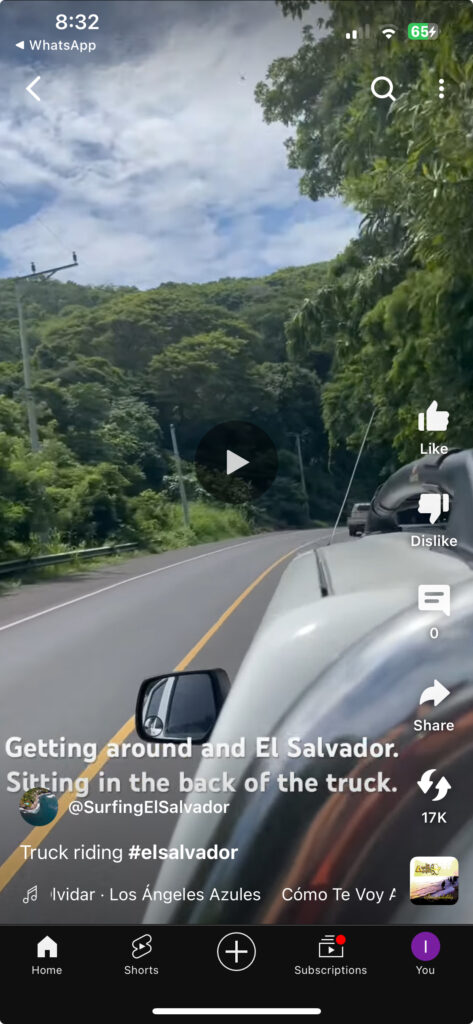When it comes to getting around in El Salvador, especially along the coast, you’ve got plenty of options! Your budget, time, and love for adventure will all factor in, and this guide will give you a fun breakdown of what to expect. Whether you’re here to surf El Salvador (probably, right?!) or just explore, these tips will be handy!
First things first, we won’t dive into the “driving culture” here—that’s covered in another blog (seriously, check it out if you’re renting a car or bike). Now, let’s talk travel!
El Salvador Road Conditions and Getting to Surf Spots
Good news! The main coastal roads are generally in good shape. Sure, there might be a few potholes and faded lines, but they’re mostly fine for travel. However, some roads can get super bumpy—think 4×4 territory—especially during the rainy season when surf spots near river mouths are prone to flooding. Before heading out, make sure to ask the place you’re staying or the destination you’re headed to, “Will I need a 4×4? Are there any rivers to cross? Will the roads be tricky if it rained recently?” If you’re unsure, it might be worth changing plans for the day, as the strong sun usually dries things up quickly!
Uber or Local Taxis?
If someone offers you an “Uber,” don’t be fooled—out by the coast, they’re talking about local taxis! The app might work in San Salvador, but in surf towns, “Uber” is just code for “someone who’ll give you a ride.” Ask around—locals, hotels, or resorts will know a driver. Heads up, though: taxis are often small sedans, so make sure they know you’re traveling with a surfboard. Oh, and get WhatsApp! It’s the best way to stay in touch with drivers and have backup numbers saved.
Taxi prices vary, but remember: El Salvador is still developing, so be generous when tipping drivers. It’s a good way to support the local economy and build some good travel karma!
Renting a Car – Is It Worth It?
Totally an option! Lots of people do it, but here’s the deal: inspect the car, read the contract carefully, and expect at least a flat tire. Fix it at a local shop (“taller”) instead of going back to the rental company to avoid extra charges. And be careful—rentals often have hidden fees for even the tiniest scratch. If you can, find a local you trust to rent from. Pro tip: Most rental cars here are salvaged vehicles from the U.S. They’ll get the job done, but don’t be surprised if something quirky happens mid-trip.
Motorcycle Rentals: Thrilling, but Risky!
If you’re experienced, renting a motorcycle is an option, but be cautious. Roads can be wild, with trucks zooming by, and accidents are unfortunately common. Only do this if you’re confident and know the risks!
Walking: The Simple Life
If you’re staying in surf towns like El Tunco or El Zonte, walking is perfect! In more spread-out areas like K59 or Mizata, you might want to venture further—so you’ll need other transport options.
Hitchhiking: An El Salvador Tradition
Hitchhiking is common, and even the police do it! But it can be slow, so if you’re in a hurry, maybe rethink this one. Locals can be selective about who they pick up, too.
Buses: Affordable but Packed
Buses are cheap and mostly reliable! However, they’re the main way locals travel, so expect crowds. Surfboards can make it tricky, especially if the bus is full—bus drivers may turn you away. But, if you’ve got time and aren’t lugging around a board, buses are a fantastic option.
Ready for your El Salvador adventure? Visit us at surfk59.com for all the insider tips on traveling and, of course, surfing the best breaks! 🌊

